NOMEX Type 414 is designed for applications requiring a strong, yet flexible and conformable sheet. It is electrically and thermally similar to NOMEX® type 410, but is calendered under different conditions to provide its unique properties. NOMEX® Type 414 is produced in five thicknesses (0.09 to 0.38 mm) (3.4 to 15 mil), with a density from 0.9 to 1.0. NOMEX® Type 414 was designed for use as slot insulation in hand-wound motors and for linear wrapping of wire, but is also used in other applications where its specific characteristics are desirable, such as folded or punched parts. Another example is its use as sheet insulation in fluid-filled transformer applications due to its improved impregnability versus NOMEX® Type 410.
Electrical properties
The typical electrical property values for NOMEX® Type 414 paper are shown in Table I. The AC Rapid Rise dielectric strength data of Table I, representing voltage stress levels, withstood 10 to 20 seconds at a frequency of 60 Hz. These values differ from long-term strength potential. DuPont recommends that continuous stresses in transformers not exceed 1.6 kV/mm (40 V/mil) to minimize the risk of partial discharges (corona). The Full Wave Impulse dielectric strength data of Table I were generated on flat sheets, such as in layer and barrier applications. The geometry of the system has an effect on the actual impulse strength values of the material. The dielectric strength data are typical values and not recommended for design purposes. Design values can be supplied upon request.
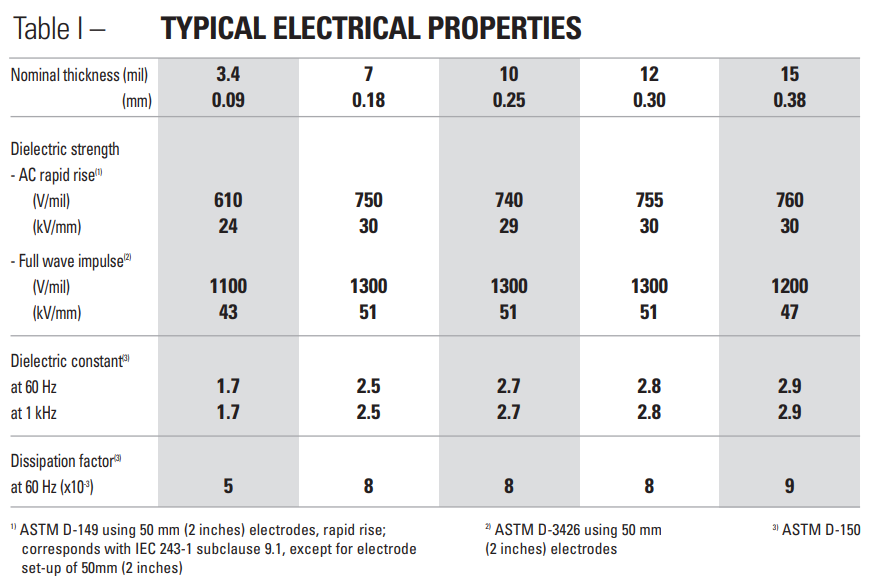
Please note:
The properties in this data sheet are typical, or average values and should not be used as specification limits. Unless otherwise noted, all properties were measured in air under “standard” conditions (in equilibrium at 23˚C, 50% relative humidity). Note that, like other products of papermaking technology, NOMEX® papers have somewhat different properties in the papermaking machine direction (MD) compared to the cross direction (XD). In some applications (for example, motor slot liners), it is necessary to orient the paper in the optimum direction to obtain its maximum potential performance.
The effects of temperature on dielectric strength and dielectric constant are shown for NOMEX® Type 410 paper in Figure 1 of the NOMEX® Type 410 data sheet. Since NOMEX® Type 414 paper is chemically identical to NOMEX® Type 410 (differing only in structure), its electrical properties will react similarly to
temperature changes up to and including 220˚C. Variations in frequency up to 104 Hz have essentially no effect on the dielectric constant of NOMEX® Type 414 paper, and dissipation factors remain below 0.015 up to these frequencies.
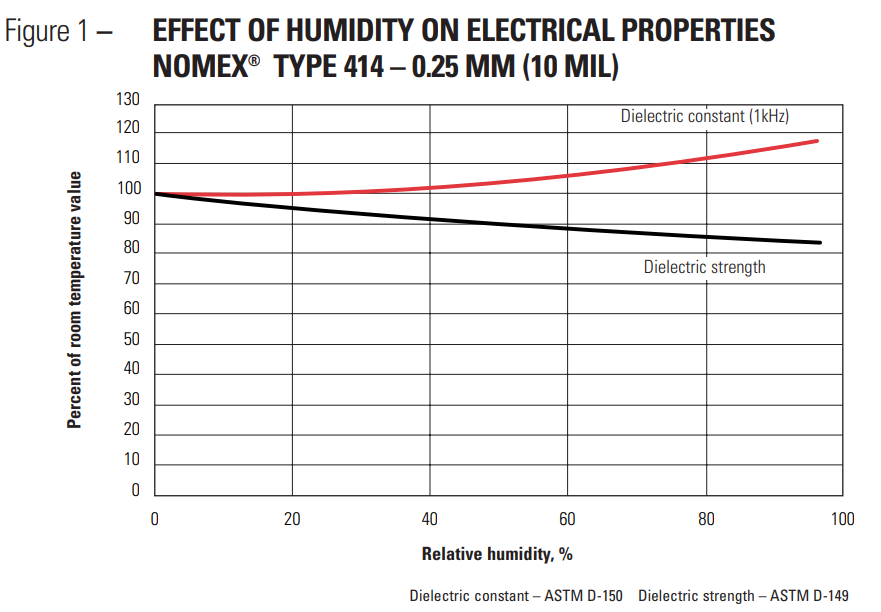
The insensitivity of dielectric strength to moisture (humidity) has already been shown for NOMEX® Type 410 paper in Table II on the NOMEX® Type 410 data sheet. The relatively minor effects of 8 days’ exposure at various humidities on the dielectric strength and dielectric constant of NOMEX® Type 414 – 0.25 mm (10 mil) are shown in Figure 1. Data for other electrical properties of NOMEX® Type 414 – 0.25 mm (10 mil) are shown in Table II.
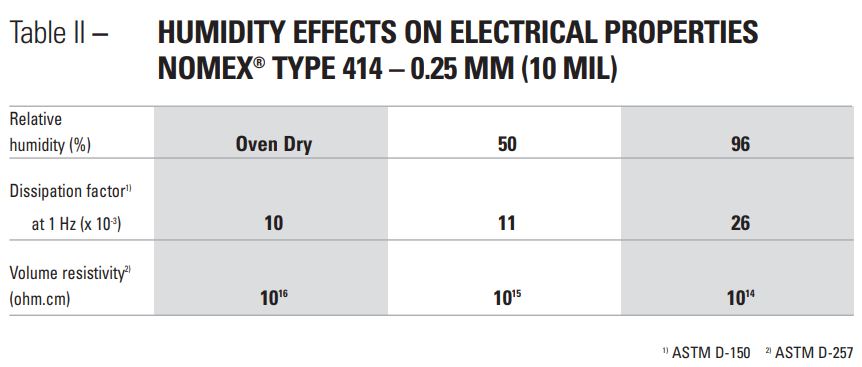
Mechanical properties
The typical mechanical property values for NOMEX® Type 414 paper are shown in Table III. The effects of temperature on tensile strength and elongation are illustrated for NOMEX® Type 410 paper in Figure 5 of the NOMEX® Type 410 data sheet. These effects will be similar for NOMEX® Type 414 paper. The flexibility of NOMEX® Type 414 is shown by the good fold endurance values in Table III. These values are at least double the values for the same thickness of NOMEX® Type 410.
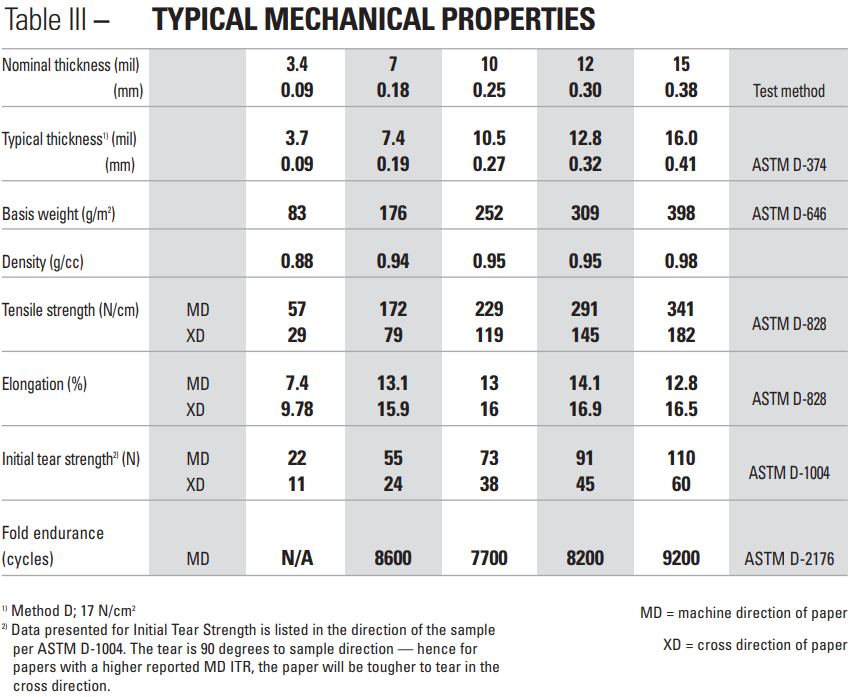
Water is a mild plasticizer for NOMEX® papers. The effects of 7 days’ exposure at various relative humidities on the tensile strength and elongation of NOMEX® Type 414 – 0.25 mm (10 mil) paper are shown in Table IV. Like elongation, the tear strength and toughness of the paper are also increased
at higher moisture contents.
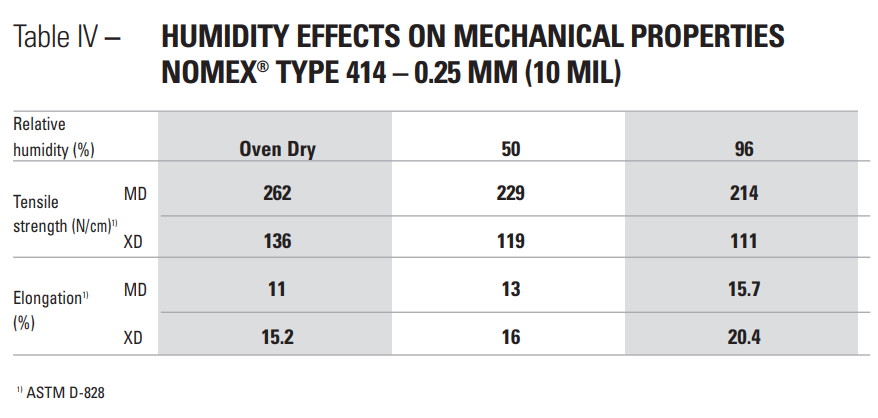
The dimensions of bone-dry NOMEX® Type 414 paper exposed to 95% R.H. conditions will increase, at most, 1% in the machine direction and 2% in the cross direction (due to moisture absorption). This swelling is largely reversible when the paper is redried. The rate of change in dimensions will depend, of course, on paper thickness and configuration (for example, individual sheets versus tightly wound rolls). Variations in environmental humidity will usually produce dimensional changes which will be less than 1%. However, even small dimensional changes, especially if they are non-uniform, can cause or accentuate non-flatness and other problems in critical operations. Therefore, NOMEX® paper intended for such applications should be kept sealed in its protective polyethylene wrapper, to maintain uniform moisture content, until just before use
Thermal properties
Arrhenius plots of thermal aging behavior for NOMEX® are exemplified by Figures 7, 8 and 9 of the NOMEX® Type 410 data sheet. Similar aging of NOMEX® Type 414 paper at elevated temperatures has resulted in its recognition as a 220˚C insulating material.
Chemical stability
The compatibility of NOMEX® paper and pressboard with virtually all classes of electrical varnishes and adhesives (polyimides, silicones, epoxies, olyesters, acrylics, phenolics, synthetic rubbers), as well as other components of electrical equipment, is demonstrated by the many UL-recognized
systems comprising NOMEX,® as well as longstanding commercial experience. NOMEX® papers are also fully compatible (and in commercial use) with transformer fluids. (mineral and silicone oils and other synthetics) and with lubricating oils and refrigerants used in hermetic systems. Common industrial solvents (alcohols, ketones, acetone, toluene, xylene) have a slight softening and swelling effect on NOMEX® Type 414 paper, similar to that of water. These effects are largely reversible when the solvent is removed. As with NOMEX® Type 410, the Limiting Oxygen Index (ASTM D-2863) of NOMEX® paper NOMEX® Type 414 at room temperature ranges between 27 and 32% (depending on thickness and density). Materials with LOI above 20.8% (ambient air) will not support combustion. Since NOMEX® Type 414 paper is identical in composition (and similar in structure) to NOMEX® Type 410, its flammability characteristics will also be similar.


 Tiếng Việt
Tiếng Việt

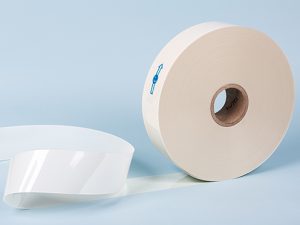


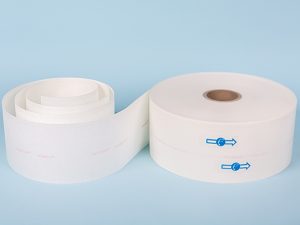
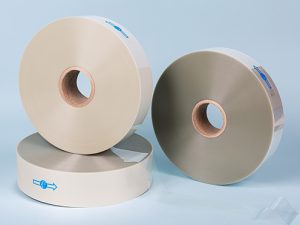

Reviews
There are no reviews yet.